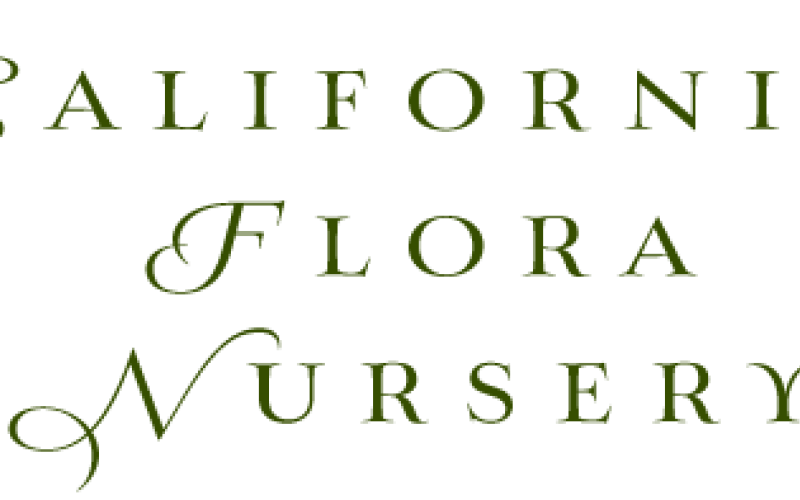Gardeners wanting to increase biodiversity will want to include native plants in their gardens. Besides being beautiful and well adapted, native plants provide food and cover for native birds, bees, butterflies and amphibians. No matter what your garden's focus, including native plants will increase the abundance and diversity of native fauna.
We Have Buckwheats!

The California Flora offers a rich diversity of native buckwheats (Eriogonum species) which are wonderful ornamental plants and "must haves" for attracting beneficial insects. They range from small and choice to large and dramatic. Sun loving and drought tolerant these sturdy perennials require good drainage. They make great container subjects as well. The masses of tiny flowers are quite showy and range in color from creamy white to soft and bright yellows and varying shades of pink to red. As the flowers fade their colors deepen to shades of burnt orange, deep reds and rusty browns. The flowers can be used in fresh or dried arrangements.
Buckwheats (Eriogonum species) have substantial wildlife value, providing pollen and nectar for bees and butterflies, larval food for butterflies, seeds for birds and cover for many creatures. They have many ornamental features for the garden offering attractive foliage, interesting form, long blooming flowers, and the ability to grow and thrive in rugged conditions.
We have a variety of buckwheats now available in four inch pots. Red-flowered buckwheat, coast buckwheat, sulfer buckwheat, California buckwheat, Saint Catherine's lace, and one ANNUAL species, wicker buckwheat.
The Real Deal

There are many plants, native and non-native, which provide nectar for butterflies. But for butterflies to reproduce we need to provide food sources for their larval stage. Butterflies are in decline in part because of the loss of their larval food source. Some butterflies are very specific in the plants they use to lay eggs on, others have adapted to using related alien species. An example of a butterfly needing specific host plants is the Monarch butterfly. Monarchs lay their eggs only on milkweeds (Asclepias species). We have a new crop of Asclepias speciosa in one gallon containers. The Anise swallowtail has adopted non-native host plants such as fennel, dill , parsley and other members of the Apiacea. Their native larval food includes Angelica, Lomatium, Heracleum and Perderidia. Why not plant some native larval food for the anise swallowtail butterfly? We have a new crop of Yampah (Perderidia kellogii) in one gallon containers just beginning to elongate their flower stems.
Hummingbird Magnets

California fuchsia's tubular flowers are custom made for hummingbirds. Their showy blossoms come on in late summer through fall just as many other plants are fading. Vigorous and easy to grow, these spreading perennials form ground covers of varying heights and foliage colors. Plant in full sun to very light shade in settings that allow for their spreading nature. Touted as drought tolerant, we have found that they look best with occasional summer water. Here at the nursery they are virtually care free in the ground. We have heavy adobe clay which we have mounded up for planting areas. They have performed beautifully on our water retentive adobe soils, often with no additional summer watering.
Over the years we have collected a fine selection of cultivars which are now available in four inch pots and gallons. Cultivars of Epilobium species include 'Schefflin's Choice', 'Everett's Choice', 'Cloverdale', 'Calistoga', 'Chaparral Silver', 'Bowman's Hybrid', 'Catalina' and a pink flowering form, 'Marin Pink'.
Monkeyflowers

We have a good supply of the shrubby Monkeyflowers offering a wide range of colors. These popular, showy 2-3 foot shrubs are covered in a profusion of azalea-like blossoms from spring into summer. We carry our local sticky monkeyflower species (Mimulus aurantiacus) with it's many small orange flowers as well as an impressive variety of hybrids with colors including shades of ivory and white, soft and dark yellows, oranges, reds and purples. Can grow in full sun but appreciate a little shade and once established are quite drought tolerant. Dependably deer resistant. Larval food source for the painted lady and checkerspot butterfly.
Favorite of Bees and Butterflies
Two perennials we have in stock are wonderful bee and butterfly plants.
Yarrow - Achillea millefolium
On a recent visit to a sunny Sonoma garden there were clumps of yarrow dotted throughout the garden in full bloom. The large white domes made up of many small white flowers were the perfect landing platforms for a myriad of native bees, European honey bees and checkerspot butterflies. We carry a number of selections of the easy to grow native yarrow. We have a coastal selection we call 'Sonoma Coast' with emerald green foliage and short flower stalks under one foot tall with dense white flower heads. An inland form called 'Calistoga' with grey wooly foliage and white flower heads on one foot tall flower stems is slower to spread than many varieties. 'Island Pink' fares from Santa Cruz Island and sports dark green foliage and rosy pink flowers on 18 inch stems. We also have a crop grown from seed collected from a hot interior site in Napa County that has white flowers and greyish foliage.
Besides being an important nectar source for bees and butterflies, birds forage on the ferny fragrant leaves in winter. This spreading perennial grows in sun to light shade with occasional water in summer.
Coyote Mint - Monardella villosa

Pungent minty foliage and dense heads of lavender flowers are a favorite of bees and butterflies. This drought tolerant, slightly woody small shrub is best in full sun with good drainage. We have two forms, one called 'Russian River' from the rocky banks of the lower Russian River and a smaller form from Marin County called 'Soulejoule'.

